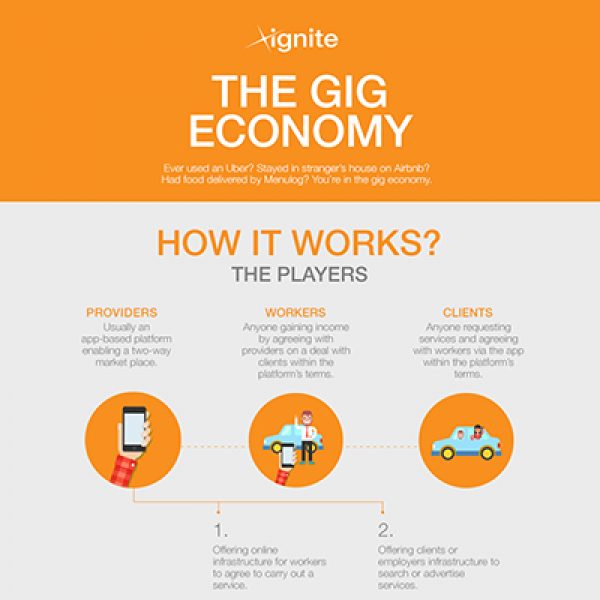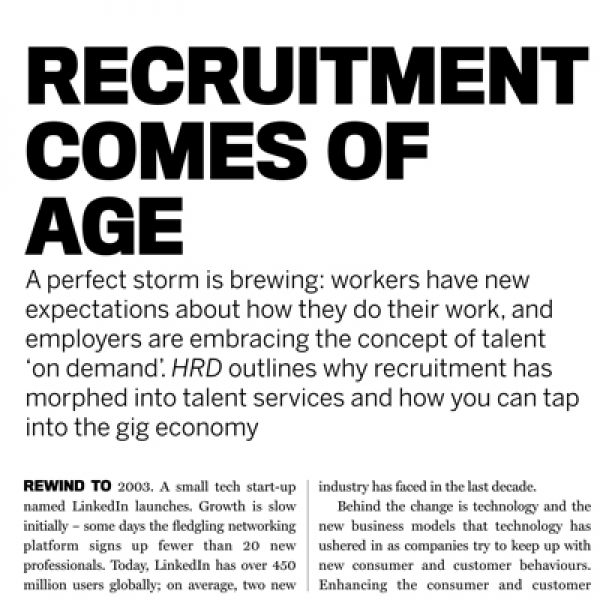
Working in the gig economy conjures up images of both ultimate work-flexibility and risk. Is there a way to get the best of both worlds? Read on.
Gig Economy – Get the Best of Both Worlds
Working in the gig economy conjures up images of both ultimate work-flexibility but at the same time financial risk, instability and at worst, exploitation.
The joys of working in the gig economy seem obvious – from working where you choose; your home, a car, your favourite coffee shop or even on a hammock on a tropical beach, to working when you want; day or night, while looking after kids or caring for your family.
However, the flip side to this freedom can be inconsistent work, patchy cash-flow, working for and with people you don’t know, and lack of perks and protections that a permanent gig can bring such as paid holiday, super annuation or worker’s insurance, which can be non-existent.
So what is the gig economy? It’s essentially where incomes are earnt or supplemented by trading individual goods and services online. For example, you could be renting out a room via Airbnb, outsourcing graphic design with Freelancer, driving for Uber, delivering for Foodora or sharing your car with Car Next Door. It’s a tech-enabled, flourishing part of the economy and it’s growing rapidly.
Some studies have revealed that over 30% of the Australian workforce are now engaged in freelance work which contributes $51 billion to the national economy and both figures are rising.*
Ian Matthews, National Account Manager at Ignite Services, has been working in the IT and recruitment industries for 30 years and has watched the market evolve. With particular emphasis on outcome-based results for clients he believes the gig economy is becoming more important for both candidates and employers.
“There’s been a major shift, thanks to technology, in we can achieve in a short amount of time so it makes sense to adopt short-term strategies and contracts to achieve your goals,” he said.
“My position at Ignite has enabled me to watch the incredible development of global working trends and I can safely say that the gig economy offers a great opportunity for those ready for the life change and challenge,” he added.
He’s noticed many candidates thriving in this fast paced higher-risk working environment including Baby Boomers and millennials who currently are more comfortable with multiple jobs, combining them with on-going education and upskilling.
However, not all people are cut out for this environment. This is because the burden of sick leave, carer’s leave capital expenditure and insurance is often carried by the worker, not the platform or employers. For example, Uber drivers are expected to own their own cars and cover all maintenance costs, delivery drivers have to cover themselves for insurance and tech workers often have only email correspondence with an unknown entity who is essentially their boss.
How Ignite Protects You
Ian believes the way to truly take advantage of the gig economy is to be part of Ignite’s new On-Demand service which offers workers the protection of super annuation and workers’ insurance but at the same time lets a worker enjoy the freedoms and opportunities offered by the gig economy.
Ignite’s On-Demand service meets the growing need for flexible and immediate skills by connecting pre-qualified, talented workers with IT tasks, allowing clients access to services on a shared digital marketplace. It gives IT workers the ability to be free agents whilst helping organisations manage short terms spikes in personnel without the overhead that comes with managing full time employees.
“Essentially it’s the best of both worlds for both parties. Freedom for the workers and consistent results without increased spend for clients,” said Ian.
*Freelancing in Australia: A National Survey of the New Workforce. Data collected July 19-July31 2014 by independent research firm Edelman Berland.

Leave a Comment
We’d love to hear from you! Share your thoughts or ask a question in the form below.